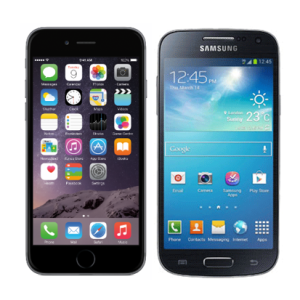A recent federal appeals court ruling in the never-ending patent war between smartphone giants Apple and Samsung could have a drastic effect on future innovation — including fewer choices and higher prices for consumers.
The U.S. Federal Circuit Court of Appeals last Monday ordered Samsung to pay Apple more than half-a-billion dollars in damages for infringing on Apple design patents in an appeal of a California district court case that was decided in Apple’s favor in 2012.
In the original case tried before the U.S. District Court for Northern California, nine jurors found Samsung infringed on six out of seven Apple patents, including the rectangular shape and rounded corners of the iPhone and the shape of its app icons, leaving Samsung on the hook to pay Apple an initial damage assessment of $1.05 billion.
At the heart of that case was Apple’s allegation that Samsung violated the iPhone and iPad maker’s design patents and trade dressing, both of which cover the look and aesthetic of a product, rather than its technical components and functionality.
Design patents cover ornamental design elements that a company has expressly patented, while trade dressing alleges the trademarking of design features, which can be both registered and unregistered. That means one company can go after another for such elements that are commonly associated with their brand, even if they didn’t see the need to register them beforehand.
That’s where the three judges on the federal appeals court disagreed with the California district court. According to the court, trade dressing — like the rectangular shape and rounded corners of a smartphone — can’t be claimed solely by Apple’s iPhone, as they serve more of a common-sense functional purpose than a proprietary aesthetic one (in this case, the court agreed with Samsung’s argument that rounded corners make it easier to pull a phone out of your pocket, and improve its durability in the event of a fall).
The court also dismissed Apple’s trade dressing claims over iPhone 3 and 4’s app icon shape and placement, which the company alleged was also copied in Samsung’s Galaxy handset designs at the time. As a result, the court slashed the $382 million portion of the fine awarded for trade dress violations, reducing Samsung’s damages to $548 million (they were previously reassessed and reduced in the California court by presiding Judge Lucy Koh by some $450 million following Samsung’s initial guilty verdict).
But there’s more at stake than half-a-billion in damages — a negligible amount for both Apple and Samsung. What the court did uphold were Apple’s design patent infringement claims against Samsung, and established the validity of awarding damages based on the value of an entire product — in this case, the entire iPhone — rather than just the value of the infringed patented feature — the rounded corners.
As a result of the ruling, which Samsung may appeal all the way to the Supreme Court, the company would have to pay the “total profit” of its infringing Galaxy products to Apple in order to make up for Apple’s “lost profits” — all based solely on one design feature of a product, and discounting all of its remaining form and function.
Such a precedent could influence a rapid uptick in patent trolling — the filing of often-frivolous patent claims by what are often shell companies in order to get a quick settlement from established innovators. As a result of the Apple v. Samsung case, a growing number of those cases could force innovators to pay out the entire profit of a given product based on a single design feature, elevating form over function.
Any combination of the above could instill a slowdown in innovation — as companies take more time to ensure new products don’t infringe on existing ones — and a greater expense for consumers, as companies take time to research existing patents during the research and development phase and fight potential court battles. The result could mean less market competition and choice, which again, leads to higher prices for consumers.
The case also highlights other criticisms of the government’s handling of the uptick in patent cases, including with the Federal Circuit Court of Appeals — the sole appellate arbiter of patent cases before the Supreme Court. The court has long been accused of making patents easier to secure and enforce, and over time, undermining provisions of precedents set down the the Supreme Court itself (last year, the Supreme Court reversed a Federal Circuit decision that prevented parties sued by patent trolls from recouping their legal fees in frivolous patent claims — the latest in a series of 9-0 reversals of Federal Circuit patent cases.)
Other critics argue the U.S. Patent and Trademark Office is too lenient in granting unspecified patents, which are often filed for the express purpose of patent trolling.
Congress will continue working on its solution to the problem next week when lawmakers return from the Memorial Day recess, and when House Judiciary Committee Chairman Bob Goodlatte and Courts, Intellectual Property and Internet Subcommittee Chairman Darrell Issa indicated they plan to resume moving the Innovation Act through committee — legislation aimed at reforming patent law and combating the rise of obscure patents filed solely to challenge innovators in court.

